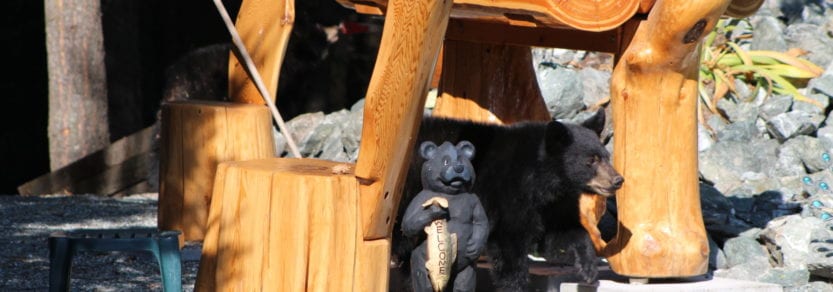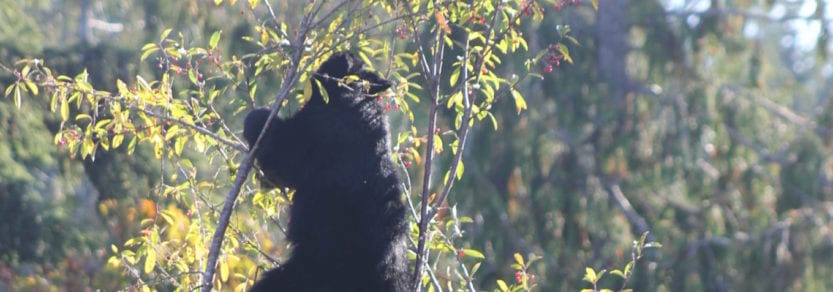An unsecured trash receptacle. Hand-fed by humans. These are just some of the ways B.C.’s bear population is facing adversity as we continue to build on and live in habitats that used to belong to our wild animal friends across the province. But it’s not too late to make a difference.

“Whether it’s a garbage bin not being secured properly, tree fruits not being harvested or hand feeding an animal along the side of the road, people don’t seem to realize that these interactions negatively impact the wildlife we share space with,” says Sara Dubois, chief scientific officer for the BC SPCA. “Sadly, this can directly or indirectly lead to some animals losing their lives.”
What’s more, some people seem to think relocation is an easy answer to the problem. “Relocation is generally not a humane or effective solution, as it doesn’t address the ongoing human food source – also called attractants – easily accessible through a neighbourhood’s compost bins, fruit falling from trees, or even when people leave pet food outside. Most bears search for food to bulk up prior to hibernating in the winter; once hibernation time is done, the bears are back out in the spring looking to satisfy their new appetites. If they know they can find a jackpot of food in a trash bin, or if they can pry at a bird feeder or bee hive for nourishment, why wouldn’t they?”

Dubois also notes there are a variety of risks associated with relocation. “It wasn’t long ago a sow bear and her three cubs were horribly impacted by an attempt to relocate the family from the area they were accessing berries in. When the conservation officer service tried to tranquilize the sow, she climbed up a tall tree, and then fell, breaking her neck – killing her.” Not only are her three cubs without their mother – the odds are now undoubtedly stacked against them. “Her bear cubs are less than a year old, and the Conservation Officer Service has decided not to relocate them. While there’s no doubt there should have been a net to catch the bear, taking this a step further and ensuring attractants are inaccessible to these animals (PDF) is the best way to keep them at bay.”
And that’s where Dubois says local government officials need to step in – something that can only be done with the help of the community. “It’s important we let our elected local officials know that we care about the animals we share this land with. Bears, raccoons, birds, and every wild animal in between – they are an imperative part of our amazing ecosystems, and we need to make sure they are taken care of.”

Enacting local bylaws can help ensure we live in responsible communities that keep all creatures – be they human or animal – safe.
